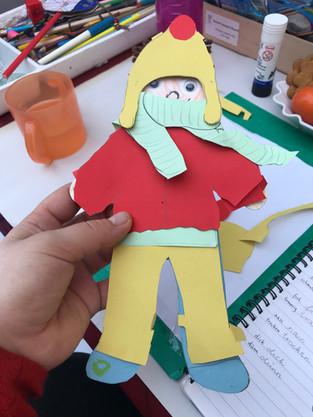Winter clothes
- thegermantutorlond
- Sep 15, 2020
- 2 min read
Updated: Sep 27, 2020
An example of an hour of learning and fun with me: “
Winter clothes”
This is an example of how I teach the theme “winter clothes”.
I introduce the new theme’s vocabulary with the help of flash cards, then I show a picture of a fully dressed child and we put small cards with the names of the clothes on the appropriate place on the picture.
We play a matching game. We match flash cards with word cards. I often use actual clothes instead of the flash cards, which makes the game even more fun, individual and effective, because the children know that their hat was called "Mütze" in German, so every time they put their hats on, they will remember the name.
We play the dressing up game. First my student/students tell me the German names of all the clothes they are wearing, then I tell the students what clothing to put on next. They have to choose the right piece. Then we get dressed up completely for going out in Winter. While we do so we say in German “I’m putting my hat on”, “I’m putting my scarf on”, …coat, …gloves, etc. Before we get too hot, we take our winter clothes off again saying in German: “I’m taking off my coat, …” etc.
We make a little puppet out of cardboard (see picture) and we make him/her clothes out of colourful paper and while doing so we practice the names of the clothes we are making adding the names of the colours to them. “This is a blue jumper; these are yellow boots” etc.
In the end of the session we usually play the board game of winter clothes, which is always a big hit. The kids have lots of fun and because they are competitive this way they don't even realize that they are actually still practicing what we have just learned. It is a quick, effective and effortless way to learn.
These are the exercises I usually combine depending on the age, reading ability and mood of the children, usually adding either a song or little story matching the theme.




Comments